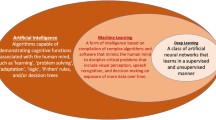Abstract
Recent advances in continuous electroencephalogram (EEG) monitoring with digital EEG acquisition, storage, and quantitative analysis allow uninterrupted assessment of cerebrni cortical activity in critically ill neurological-neurosurgical patients. Early recognition of worsening brain function can prove of vital importance as one can initiate measures aimed to prevent further brain damage. Although continuous EEG monitoring provides dequate spatial and temporal resolution and is able to continuously assess brain function in these critically ill patients, it requires a trained electroencephalographer to interpret the massive amounts of data generated. This limitation impedes the widespread use of EEG in assessing real-time brain function in critically ill patients. Here, we demonstrate the utility of a novel method of automated EEG analysis that segments and extracts EEG features classifies and groups them according to various patterns, and then presents them in a compressed fashion. This permits real-time viewing of several hours of EEG on a single page. Examples are presented from three patients, two with recurrent seizures and one with diagnosis of subarachnoid hemorrhage. These patients illustrate the ability of this novel method to detect important real-time physiological changes in brain function that could enable early interventions aimed to prevent irreversible brain damage.
Similar content being viewed by others
References
Jordan KG. Neurophysiologic monitoring in the neuroscience intensive care unit. Neurol Clin 1995;13:579–626.
Scheuer ML. Continuous EEG monitoring in the intensive care unit. Epilepsia 2002;43 Suppl 3:114–127.
Wartenberg KE, Mayer SA. Multimodal brain monitoring in the neurological intensive care unit: where does continuous EEG fit in? J Clin Neurophysiol 2005;22:124–127.
Scheuer ML, Wilson SB. Data analysis for continuous EEG monitoring in the ICU: seeing the forest and the trees. J Clin Neurophysiol 2004;21:353–378.
Claassen J, Mayer SA, Kowalski RG, Emerson RG, Hirsch LJ. Detection of electrographic seizures with continuous EEG monitoring in critically ill patients. Neurology 2004;62:1743–1748.
Mayer SA, Thomas CE, Diamond BE. Asymmetry of intracranial hemodynamics as an indicator of mass effect in acute intracerebral hemorrhage. A transcranial Doppler study. Stroke 1996;27: 1788–1792.
Rampil IJ, Holzer JA, Quest DO, Rosenbaum SH, Correll JW. Prognostic value of computerized EEG analysis during carotid endarterectomy. Anesth Analg 1983;62:186–192.
Vespa PM, Nuwer MR, Juhasz C, et al. Early detection of vasospasm after acute subarachnoid hemorrhage using continuous EEG ICU monitoring. Electroencephalogr Clin Neurophysiol 1997;103:607–615.
Kearse LA, Jr., Martin D, McPeck K, Lopez-Bresnahan M. Computer-derived density spectral array in detection of mild analog electroencephalographic ischemic pattern changes during carotid end arterectomy. J Neurosurg 1993;78:884–890.
Vespa P. Continuous EEG monitoring for the detection of seizures in traumatic brain injury, infarction, and intracerebral hemorrhage: “to detect and protect”. J Clin Neurophysiol 2005;22: 99–106.
DeLorenzo RJ, Waterhouse EJ, Towne AR, et al., Persistent nonconvulsive status epilepticus after the control of convulsive status epilepticus. Epilepsia 1998;39:833–840.
Bickford RG, Fleming N, Billinger T. Compression of EEG data. Trans Am Neurol Assoc. 1971;96:118–122.
Alster J, Pratt H, Feinsod M. Density spectral array, evoked potentials, and temperature rhythms in the evaluation and prognosis of the comatose patient. Brain Inj 1993;7:191–208.
Kinefuchi Y, Katoh H, Ohtani I, Iga T, Shirakura K, Yamasaki Y. Intraoperative EEG monitoring: (I). Parametric representation of processed EEG during anesthesia. Tokai J Exp Clin Med 1988; 13:53–61.
Cant BR, Shaw NA. Monitoring by compressed spectral array in prolonged coma. Neurology 1984;34:35–39.
Hakkinen VK, Kaukinen S, Heikkila H. The correlation of EEG compressed spectral array to Glasgow Coma Scale in traumatic coma patients. Int J Clin Monit Comput 1988;5:97–101.
Karnaze DS, Marshall LF, Bickford RG. EEG monitoring of clinical coma: the compressed spectral array. Neurology 1982;32: 289–292.
Mondello E, Panasiti R, Siliotti R, Floridia D, David A, Trimarchi G. BIS and Ramsay score in critically ill patient: what future? Minerva Anestesiol 2002;68(1–2):37–43.
Gilbert TT, Wagner MR, Halukurike V, Paz HL, Garland A. Use of bispectral electroencephalogram monitoring to assess neurologic status in unsedated, critically ill patients. Crit Care Med 2001;29(10):1996–2000.
Gupta AK. Monitoring the injured brain in the intensive care unit. J Postgrad Med 2002;48:218–225.
Altafullah I, Asaikar S, Torres F. Status epilepticus: clinical experience with two special devices for continuous cerebral monitoring. Acta Neurol Scand 1991;84:374–381.
Claassen J, Hirsch LJ, Kreiter KT, et al. Quantitative continuous EEG for detecting delayed cerebral ischemia in patients with poor-grade subarachnoid hemorrhage. Clin Neurophysiol 2004;115(12):2699–2710.
Labar DR, Fisch BJ, Pedley TA, Fink ME, Solomon RA. Quantitative EEG monitoring for patients with subarachnoid hemorrhage. Electrocephalogr Clin Neurophysiol 1991;78:325–332.
Shah A, Agarwal R, Carhuapoma J, Loeb J. Compressed EEG pattern analysis can reveal clinically relevant changes in brain functional state during long-term EEG Monitoring for neurologically critically ill. In: American Society of Clinical Neurophysiology; Montreal, Canada; 2004.
Agarwal R, Gotman J, Flanagan D, Rosenblatt B. Automatic EEG analysis during long-term monitoring in the ICU. Electroencephalogr Clin Neurophysiol 1998;107:44–58.
Agarwal R, Gotman J. Adaptive segmentation of electroencephalographic data using nonlinear energy operator. In: ISCAS; Orlando, FL: IEEE; 1999.
Agarwal R, Gotman J. Long-term EEG compression for intensive care settings. IEEE Eng Med Biol Mag 2001;20:23–29.
Author information
Authors and Affiliations
Corresponding author
Rights and permissions
About this article
Cite this article
Shah, A.K., Agarwal, R., Carhuapoma, J.R. et al. Compressed EEG pattern analysis for critically III neurological-neurosurgical patients. Neurocrit Care 5, 124–133 (2006). https://doi.org/10.1385/NCC:5:2:124
Issue Date:
DOI: https://doi.org/10.1385/NCC:5:2:124




